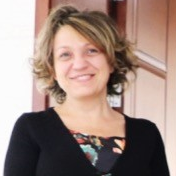Preparation and Application of Advanced Functional Membranes
A special issue of Membranes (ISSN 2077-0375). This special issue belongs to the section "Membrane Applications".
Deadline for manuscript submissions: closed (31 July 2023) | Viewed by 18917
Special Issue Editors
Interests: advanced membranes manufacturing; nanomaterials; smart surfaces and coatings; green membrane technologies; sustainable solutions for water and environmental remediation; intelligent membranes for applications in textiles and cultural heritage assets; gels
Special Issues, Collections and Topics in MDPI journals
Interests: membrane separation processes; membrane chromatography; mixed matrix membranes; protein purification; bioseparations; ultrafiltration; membrane bioreactors
Special Issues, Collections and Topics in MDPI journals
Special Issue Information
Dear Colleagues,
It is claimed that membranes will bring a large number of benefits to the fields of water and environmental remediation, energy production and storage, transport and space, industry, agriculture and foods, health and biomedicine, as well as the automotive industry, fashion and textiles, architecture and cultural heritage. A high quality of life, healthcare, comfort, safety, protection, security and defense can be ensured through the implementation of sophisticated membrane technologies. However, the successful application of membrane processes depends largely on the properties of single membranes. High selectivity–productivity trade-offs and a broader dynamic range of sophisticated mechanisms of separation, recognition, transcription, transmission and recovery can have a strong impact during membrane processes. In recent years, the membrane concept has undergone a profound evolution, moving from traditional physical barriers to dynamic and interactive interfaces. Today, new membrane models are conceived as multicompartment arrays, where the interplay of complementary functions and high-defined volumetric spaces can be achieved through complex and multifaceted combinations of materials, which force the use of developed and sustainable practices based on a green manufacturing.
This Special Issue aims to bridge the gap between materials science, process technology and circular green transition rules through: a) the synthesis of new greener, natural and biodegradable materials with unusual properties and outstanding performances; b) the characterization and assessment of transport mechanisms; and c) innovative and smart applications. Membrane digitization is a further challenge that we currently face to make the membrane technology a positive choice consistent with the modern times and methods.
This Special Issue aims to gather the recent developments on: (i) ecofriendly practices for the fabrication of hybrid nanocomposite membranes, smart surfaces and coatings; (ii) computational studies and simulations; (iii) new tools for membrane characterization; (iv) strategies to control wetting and fouling events, molecular solubility, affinity and diffusion; (v) cooperative mechanisms for selective filtration, separation and conversion; (vi) integrated manufacturing and digitization membrane technologies; and (vii) groundbreaking and singular applications in every field.
The formats of research may include (but are not limited to) the following: original articles, reviews and mini-reviews, communications, comparative perspectives, and opinions.
We look forward to receiving your contributions.
Dr. Annarosa Gugliuzza
Dr. Cristiana Boi
Guest Editors
Manuscript Submission Information
Manuscripts should be submitted online at www.mdpi.com by registering and logging in to this website. Once you are registered, click here to go to the submission form. Manuscripts can be submitted until the deadline. All submissions that pass pre-check are peer-reviewed. Accepted papers will be published continuously in the journal (as soon as accepted) and will be listed together on the special issue website. Research articles, review articles as well as short communications are invited. For planned papers, a title and short abstract (about 100 words) can be sent to the Editorial Office for announcement on this website.
Submitted manuscripts should not have been published previously, nor be under consideration for publication elsewhere (except conference proceedings papers). All manuscripts are thoroughly refereed through a single-blind peer-review process. A guide for authors and other relevant information for submission of manuscripts is available on the Instructions for Authors page. Membranes is an international peer-reviewed open access monthly journal published by MDPI.
Please visit the Instructions for Authors page before submitting a manuscript. The Article Processing Charge (APC) for publication in this open access journal is 2700 CHF (Swiss Francs). Submitted papers should be well formatted and use good English. Authors may use MDPI's English editing service prior to publication or during author revisions.
Keywords
- nanostructured functional membranes
- responsive membranes
- self-cleaning
- self-healing and (bio-)repairing
- water purification
- air purification
- environment
- energy
- modelling
- monitoring







